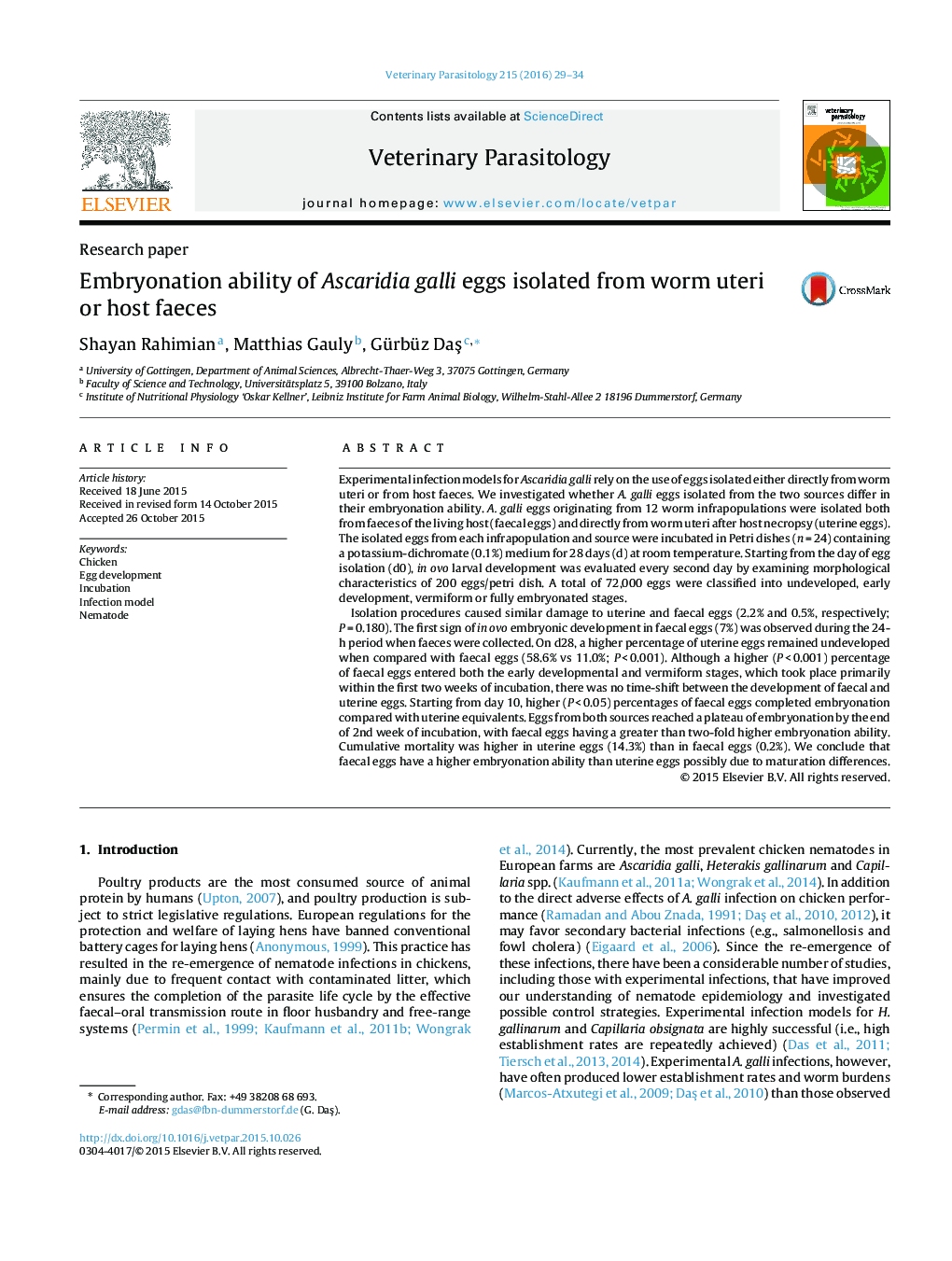| Article ID | Journal | Published Year | Pages | File Type |
|---|---|---|---|---|
| 2469851 | Veterinary Parasitology | 2016 | 6 Pages |
Abstract
Isolation procedures caused similar damage to uterine and faecal eggs (2.2% and 0.5%, respectively; PÂ =Â 0.180). The first sign of in ovo embryonic development in faecal eggs (7%) was observed during the 24-h period when faeces were collected. On d28, a higher percentage of uterine eggs remained undeveloped when compared with faecal eggs (58.6% vs 11.0%; PÂ <Â 0.001). Although a higher (PÂ <Â 0.001) percentage of faecal eggs entered both the early developmental and vermiform stages, which took place primarily within the first two weeks of incubation, there was no time-shift between the development of faecal and uterine eggs. Starting from day 10, higher (PÂ <Â 0.05) percentages of faecal eggs completed embryonation compared with uterine equivalents. Eggs from both sources reached a plateau of embryonation by the end of 2nd week of incubation, with faecal eggs having a greater than two-fold higher embryonation ability. Cumulative mortality was higher in uterine eggs (14.3%) than in faecal eggs (0.2%). We conclude that faecal eggs have a higher embryonation ability than uterine eggs possibly due to maturation differences.
Related Topics
Life Sciences
Agricultural and Biological Sciences
Animal Science and Zoology
Authors
Shayan Rahimian, Matthias Gauly, Gürbüz DaÅ,
